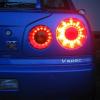R32 Gtr Parts For Sale (I Am Wrecking 'go21La')
Announcements
-
Similar Content
-
Latest Posts
-
By DraftySquash · Posted
yeah not selling the S2 bumper yet. -
I'd leave the series 2 bumper on there. Anything else is gonna be a bit janky TBH :p (or at least keep it)
-
Thanks everyone … will give it a go. Hope the added back pressure doesn’t screw up my weak rich idle issue I have… would be great if it helped it😃
-
Has anyone used 16 x 1.5 to - 6 orb to AN fittings on the pump? Are you still able to get the electrical connectors (chassis side) circled in the attached image and how could I the part numbers if so? I believe the pump I'm using is an R34 vspec/hydraulic locking rear. Thanks









Recommended Posts
Create an account or sign in to comment
You need to be a member in order to leave a comment
Create an account
Sign up for a new account in our community. It's easy!
Register a new accountSign in
Already have an account? Sign in here.
Sign In Now